|
|
|
| Origin & Development |
•
•
•
•
•
• |
| History of Lake Baikal |
•
•
•
• |
| Lake Baikal Climate |
•
•
•
• |
| Fauna & Vegetation |
•
•
•
•
• |
| Water of Lake Baikal |
•
•
•
•
•
•
•
•
• |
| Recreational Areas |
•
•
•
•
•
• |
| People of Lake Baikal |
•
•
• |
|
|
|
|
|
|
|
|
Wildlife of Lake Baikal
On the boundary of the two elements - land and water, on the narrow Baikal shore, fascinating
and peculiar life forms are found. The Baikal shore is a unique ecological niche the inhabitants
of which are connected with both dryland and water. Some of them live on land but feed in water,
others spend the greater part of the time in water but breed and end their lifetime ashore. Due
to its unique location, the land animals of the Baikal region contain specimens of the fauna found
in Central Asia, Europe - Siberia and East Asia. Furthermore, the taiga near-lake
backwoods are inhabited by rare animals which have become extinct in other places.
Among the upland high ridges, the mammals most widespread are mountain goat,
snow sheep, Alpine field-vole, marmots, and in some places -
lemmings. In summer on the slope and valley zones one can come across big
ungulate animals and their predators, brown bear in particular.
 |
|
Bears generally weight 200-300 kilos. A bear entering hibernation weights 60% more than it did
a few months earlier. In late autumn they retire to their winter den. Itís often just a space under or
over a hanging rock, or a fallen tree. Bears are not true hibernators and may be aroused easily without too
much difficulty. However, their heart beat, breathing rate, and temperature are depressed. This slowdown
of body functions will help to conserve the stores of fat. |
Local bears leave their den by mid April or
early May. A female bear may give birth to cubs in late January. The cubs are tiny -
about the size of chipmunks. The cubs stay with their mother through the summer and
then share the den in the following winter. Mother and father have full charge of the
young. The bear is territorial by nature and each bear has its own area that it uses
and protects. In the water, it is a strong swimmer.
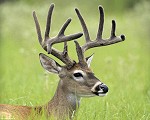 |
|
Rein deer, white tailed deer, elk,
moose, musk deer, Siberian roe, wild boar, are typical
fauna between the Alpine belt and the sparse growth of trees and the coniferous
taiga zone.
The moose is about 800-900 pounds. Females are someone
smaller. One or 3 calves are born after mating season.
|
Water rats and musk rats are characteristic
of the river banks. Among predators besides bear there are lynx and
wolverine. The Lynx is relatively lightweight. Each lynx has a large home range.
Furs are highly valued at international auctions. The taiga also shelters and feeds a
great number of little mouse - like rodents and insectivorous animals.
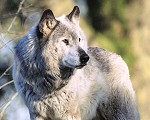 |
|
Roe deer, polecats, ground squirrels, field-voles,
insectivorous animals and wolves mainly inhabit the partially - wooded steppes.
The Wolf is a member of the dog family. These animals are divided into packs
which are believed to be a family group. Each mated pair produces a litter of about
5-6 pups in May. Wolves are highly social by nature. Each pack is well-organized and has its most |
dominant and submissive family member. Research has shown that a wolf is
not a reckless killer of wild life and therefore itís prey is mostly old and sick animals.
Wolves are stimulated to chase any animals that will run from them.
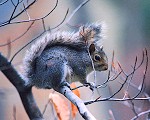
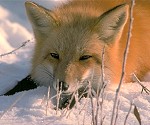
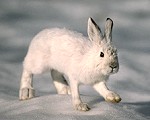
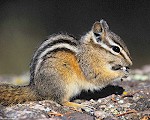 |
|
Siberian forests are famous for 69 species of fur bearing animals. 29 of them are found
in Baikal region.
Squirrel is one of the most common members of our forest land. It
prefers forest with a lot of conifers trees. The primary food is the seed of conifers.
In Autumn, squirrels store cones around the base of a tree. They eat natural fruit,
berries, and mushrooms. When food is abundant birth and survival are high.
American Mink was imported here from Canada. Most of its life is spent close
to the water. Itís short and durable fur has always been a favorite of fashion
designers. Most of the demand for fur is mink and it raised at mink-farms.
Red fox is a member of a dog family. During the day it remains hidden. The number
of pups in a litter is from 2 to 10.
Ermine. In winter they are white except for a black tip on the tail. They are
capable of killing nestling birds, chipmunks and mice.
Muskrat is one of the most numerous fur-bearing animals in Siberia. The fur is
thick and smooth used in making coats and hats. They live mostly on plants of various kinds.
Kolinsky, Alpine hare, chipmunk are also among the Baikal fur-bearers. |
At the most inspired hour, Nature presented the world with
sable - the most typical and valuable inhabitant of the south Siberian mountain
taiga.
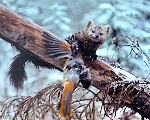 |
|
What does this little animal mean to Russia? Russians followed the sable
trail throughout Asia to the Pacific Ocean. In the XVII th century fur-trade made up
half of the national income of Russia. Salaries were paid in sable skins, debts were also
repaid in sable; Russian tsars presented the nobility of Europe and East with sable.
Sable fur is valued not only for its beauty, but because |
Sable fur is valued not only for its beauty, but because it is rather practical and durable.
Nowadays, there is a great demand for sable at international fur auctions. Sable, or the "fur-king" as
it is sometimes called, was awarded several gold medals.
It is not very easy to see
a sable in the taiga. The sable is a very careful and extremely secretive predator.
Sable hunting requires special hunting skills, endurance and also good knowledge of
the animal's habits and habitat.
|
|
|
BIRDS
|

owl |
|

duck |
|

seagulls |
|

bald eagle |
|

hawk |
|

eagle |

partridge
|
Also: Snipes, Wild-tailed Eagle, Bronze
Eagle, Bullfinch, Woodpecker, Cuckoo, Sparrow, Pigeon / dove, Nutcracker, Blue
Tit
|
|
|
Total amount of live organisms inhabiting Lake Baikal:
Species and subspecies = 2635
Number of endemic hydrobionts = 1800
POPULATION DYNAMICS of the most important commercially species of animals:
| Species |
1995 |
1996 |
1997 |
1998 |
1999 |
2000 |
| Elk |
6400 |
6530 |
6780 |
5000 |
6200 |
4200 |
| Siberian red deer |
15300 |
17111 |
15840 |
12608 |
12000 |
11800 |
| Roe deer |
19000 |
25053 |
23100 |
21538 |
24000 |
23200 |
| Wild pig |
6039 |
3635 |
5360 |
2960 |
2000 |
2300 |
| Musk deer |
14520 |
15900 |
24900 |
16000 |
14000 |
12000 |
| Reindeer |
1847 |
1670 |
1320 |
1400 |
1500 |
1550 |
| Wolf |
1500 |
1600 |
900 |
1200 |
2000 |
1600 |
| Brown Bear |
3600 |
4000 |
4000 |
3200 |
2000 |
2000 |
| Sable |
13921 |
14926 |
19340 |
14500 |
11500 |
11000 |
| Squirrel |
120151 |
95000 |
120000 |
115920 |
143345 |
332800 |
| Red Fox |
2000 |
2100 |
1400 |
1200 |
1500 |
1600 |
|
|
|
|














